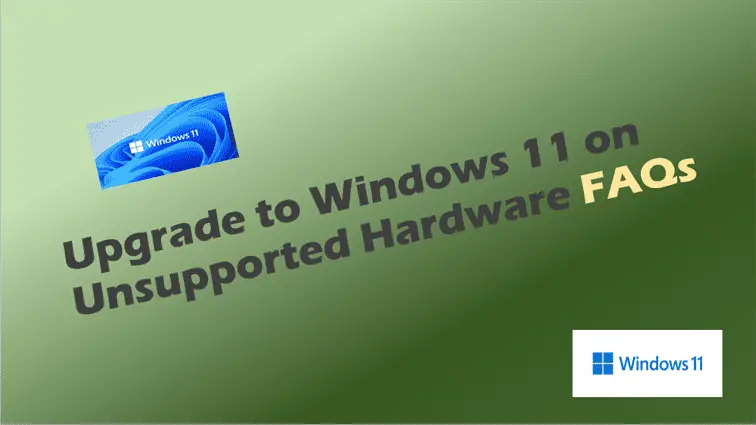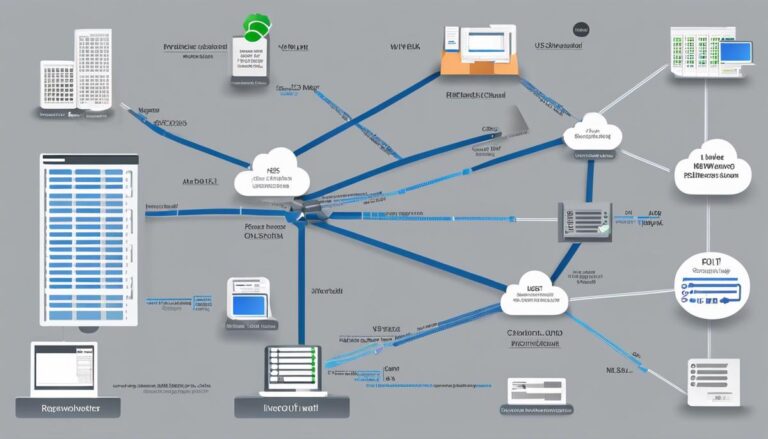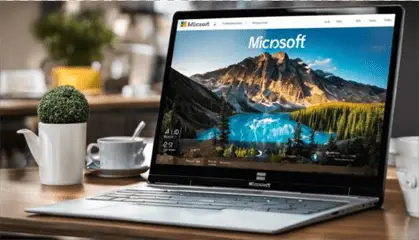Upgrade to Windows 11 on unsupported hardware FAQs
Upgrade to Windows 11 on unsupported hardware FAQs. Are you eager to upgrade your computer to the latest operating system, Windows 11?
However, you may have been disappointed to find out that your hardware is not officially supported by Microsoft. Don’t worry, because there is a way to upgrade to Windows 11 on unsupported hardware!
In this blog post, we will explore some frequently asked questions about upgrading to Windows 11 on unsupported hardware. As computer enthusiasts and users, you don’t have to miss out on the latest features and improvements in Windows 11. Keep reading to find out how you can upgrade your computer today!
Upgrade to Windows 11 on unsupported hardware FAQs
VirtualBox – Windows 10 Virtual Machine keeps shutting down gracefully while Upgrading to Windows 11.
I experienced this problem while trying to Upgrade to Windows 11 on unsupported hardware. The VM would be installing Windows 11 and as it got to between 5% – 15% it would just shut down by displaying a message on screen “Windows Shutting Down”.
The problem wasn’t the unsupported hardware but it turned out to be Windows 10 was not activated. Although this copy of Windows 10 was an Evaluation copy, it still needed to be activated.
After I activated Windows 10 on this VM, I was able to upgrade to Windows 11 on unsupported hardware successfully.
Should I Upgrade to Windows 11 on unsupported hardware?
If your Windows 10 PC doesn’t meet the minimum requirements required to install Windows 11, you can still use workarounds to bypass the checks that Windows 11 Setup carries out in relation to TPM 2.0 and CPU.
Upon disabling the checks by editing the Computer Registry, you can upgrade from Windows 10 to Windows 11 successfully. However, Microsoft says there’s a risk that your PC may not receive updates, including security updates in the future. Also, if your PC is under manufacturer’s warranty, installing Windows 11 on unsupported hardware invalidates your warranty.
Should you upgrade to Windows 11 on unsupported hardware? My recommendation would be to install Windows 11 on unsupported hardware on a Spare PC that is not critical to you, to try out Windows 11 features. After all Windows 10 will be supported till 2025 so you can keep using Windows 10 on your main PC.
Can I upgrade to Windows 11 with unsupported processor?
Microsoft has suggested a workaround that includes editing your PC registry to bypass CPU and TPM 2.0 checks so you can install Windows 11. You do this at your own risk as future updates from Microsoft are not guaranteed.
Windows 11 On Unsupported Hardware Updates
Microsoft state that you upgrade to Windows 11 On Unsupported Hardware at your own risk because they don’t guarantee to continue to provide updates on devices that do not meet the Windows 11 minimum requirements. However currently updates are still being made available (13/04/2022).
By installing on unsupported hardware, you’ve the opportunity to try out Windows 11 features without spending a lot of money on new computer hardware.
Should you upgrade to Windows 11 on unsupported hardware?
My recommendation would be to install Windows 11 on unsupported hardware on a Spare PC that is not critical to you, to try out Windows 11 features. After all Windows 10 will be supported till 2025 so you can keep using Windows 10 on your main PC.
Can you install Windows 11 on unsupported hardware?
Yes, it is possible to install Windows 11 on unsupported hardware using various methods, but it comes with risks such as potential compatibility issues and system instability. Ensure that you check your PC’s compatibility and backup important files before attempting the upgrade.
How do I force Windows 11 to update on unsupported hardware?
You can force Windows 11 to update on unsupported hardware by using methods such as installing from an ISO file, using Rufus to create a bootable USB drive, or modifying the Registry. However, this comes with risks such as potential compatibility issues and system instability. Ensure that you check your PC’s compatibility and backup important files before attempting the upgrade.
Can I upgrade to Windows 11 if my PC is not supported?
It is possible to upgrade to Windows 11 on unsupported hardware using various methods, but it comes with risks such as potential compatibility issues and system instability. Ensure that you check your PC’s compatibility and backup important files before attempting the upgrade. However, it is recommended to upgrade to a supported PC to avoid potential issues.
How to trick Windows 11 into installing on unsupported hardware?
Tricking Windows 11 into installing on unsupported hardware is not recommended as it can lead to potential compatibility issues and system instability. However, methods such as modifying the Registry or using third-party tools like Rufus can be used at your own risk. Ensure that you check your PC’s compatibility and backup important files before attempting the upgrade.
What will happen if I install Windows 11 on unsupported processor?
Installing Windows 11 on unsupported processor can lead to potential compatibility issues and system instability. It may cause performance issues, crashes, or even render your system unusable. It is recommended to check your PC’s compatibility and upgrade to a supported processor before attempting to install Windows 11.
How to install Windows 11 on unsupported PC without Secure Boot?
Installing Windows 11 on unsupported PC without Secure Boot is possible, but it requires disabling Secure Boot in the BIOS settings. You can also create a bootable USB drive using Rufus or other tools and modify the BIOS settings to enable booting from USB. However, this comes with risks such as potential compatibility issues and system instability. Ensure that you check your PC’s compatibility and backup important files before attempting the upgrade.
How to bypass TPM 2.0 and install Windows 11?
Bypassing TPM 2.0 and installing Windows 11 is not recommended as it can lead to potential security vulnerabilities and compatibility issues. However, methods such as modifying the Registry or using third-party tools can be used at your own risk. Ensure that you check your PC’s compatibility and backup important files before attempting the upgrade. It is recommended to upgrade your PC to meet the minimum system requirements for Windows 11.
What happens if I install Windows 11 without TPM and Secure Boot?
Installing Windows 11 without TPM and Secure Boot can lead to potential security vulnerabilities and compatibility issues. It may cause performance issues, crashes, or even render your system unusable. It is recommended to upgrade your PC to meet the minimum system requirements for Windows 11, including TPM 2.0 and Secure Boot, to ensure the best performance and security.
How to bypass Secure Boot to upgrade Windows 11?
Bypassing Secure Boot to upgrade Windows 11 is not recommended as it can lead to potential security vulnerabilities and compatibility issues. However, you can disable Secure Boot in the BIOS settings to upgrade to Windows 11. Ensure that you check your PC’s compatibility and backup important files before attempting the upgrade. It is recommended to upgrade your PC to meet the minimum system requirements for Windows 11, including Secure Boot, to ensure the best performance and security.
How to enable Secure Boot Windows 11 without BIOS?
Enabling Secure Boot on Windows 11 without BIOS is not possible as it requires making changes in the BIOS settings. Secure Boot is a firmware feature that ensures that only trusted software is allowed to run during system startup. You need to access the BIOS settings to enable or disable Secure Boot. Ensure that you check your PC’s compatibility and enable Secure Boot in the BIOS settings to ensure the best performance and security.
How to bypass Windows 11 requirements from BIOS?
Bypassing Windows 11 requirements from BIOS is not recommended as it can lead to potential compatibility issues and system instability. It is recommended to upgrade your PC to meet the minimum system requirements for Windows 11, including CPU, RAM, and storage capacity. However, you can modify the BIOS settings to enable features like TPM 2.0 and Secure Boot, which are required for Windows 11. Ensure that you check your PC’s compatibility and backup important files before attempting any modifications.
Can I enable Secure Boot without TPM?
No, it is not possible to enable Secure Boot without TPM as TPM 2.0 is a requirement for Secure Boot in Windows 11. TPM is a security hardware component that ensures that the system is running trusted software during system startup. It is recommended to upgrade your PC to meet the minimum system requirements for Windows 11, including TPM 2.0 and Secure Boot, to ensure the best performance and security.
How do I change my BIOS from legacy to UEFI Windows 11?
Changing your BIOS from legacy to UEFI for Windows 11 involves the following steps:
1. Check if your PC supports UEFI.
2. Back up important files and data.
3. Create a bootable USB drive with Windows 11 installation media.
4. Access the BIOS settings by pressing a key during system startup.
5. Disable legacy boot options and enable UEFI boot options.
6. Save and exit the BIOS settings.
7. Boot from the USB drive and install Windows 11 in UEFI mode.
Note that changing your BIOS from legacy to UEFI may cause potential compatibility issues and system instability. Ensure that you check your PC’s compatibility and backup important files before attempting any modifications.
Should I boot Windows 11 in Legacy or UEFI?
It is recommended to boot Windows 11 in UEFI mode as it provides faster boot times, better security, and support for larger disk partitions. UEFI (Unified Extensible Firmware Interface) is a newer firmware type that replaces BIOS (Basic Input/Output System) and offers more advanced features such as Secure Boot and faster boot times. However, ensure that your PC supports UEFI before attempting to boot in UEFI mode.
Does Windows 11 boot mode need Legacy or UEFI?
Windows 11 supports both Legacy and UEFI boot modes, but it is recommended to boot in UEFI mode for the best performance and security. UEFI (Unified Extensible Firmware Interface) is a newer firmware type that replaces BIOS (Basic Input/Output System) and offers more advanced features such as Secure Boot and faster boot times. However, ensure that your PC supports UEFI before attempting to boot in UEFI mode.
What happens if I change boot mode from Legacy to UEFI?
If you change the boot mode from Legacy to UEFI, your PC will use the newer UEFI (Unified Extensible Firmware Interface) firmware instead of the older BIOS (Basic Input/Output System). This change can provide faster boot times, better security, and support for larger disk partitions. However, it is important to note that changing the boot mode from Legacy to UEFI can cause potential compatibility issues and system instability. Ensure that you check your PC’s compatibility and backup important files before attempting any modifications.
Further Reading:
Posts related to this one (Upgrade to Windows 11 on unsupported hardware FAQs):






